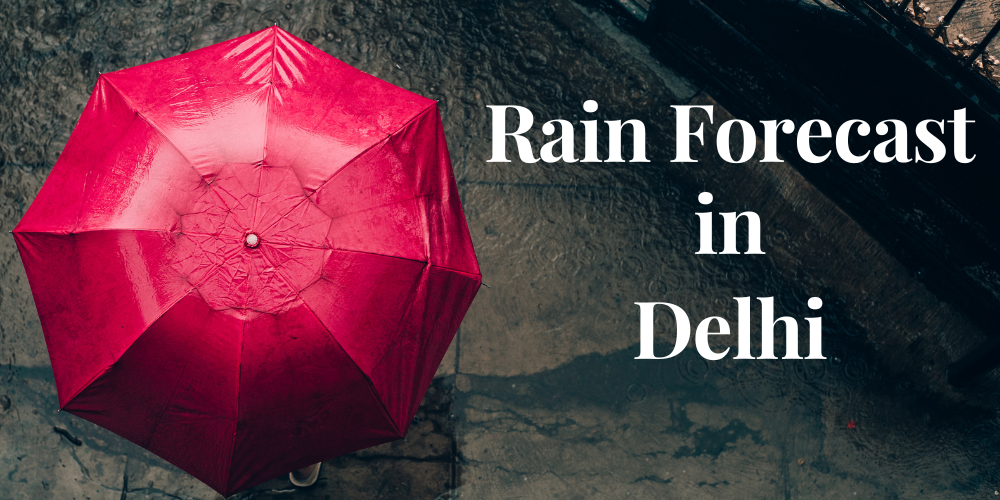
The rainfall in Delhi is a subject of sharp contrasts. For many months, people endure scorching summer heat. They eagerly await the cooling relief of rain. Then, the skies finally deliver powerful downpours. This brings a welcome drop in temperature. But this relief can be temporary. It is often replaced by flooded streets. Traffic jams and daily chaos quickly follow. Understanding the city’s precipitation is vital. It helps people navigate its dual nature.
This detailed guide covers Delhi’s rain patterns. We explore seasonal cycles and historical data. We also look at the science behind the rain forecast for New Delhi. Furthermore, this guide examines the city’s challenges. It provides practical advice for residents. A close look at the rain prediction in Delhi helps everyone prepare. It can turn difficult challenges into manageable situations. This knowledge is crucial for both citizens and authorities. Planning a trip? Compare and book Hotel with Agoda or book direct with Hotels.com, Booking.com, Expedia.Understanding the Monsoon: Delhi's Crucial Lifeline
The normal onset date for the monsoon is June 27th. However, this date is not fixed. The arrival can be earlier or later. It depends on atmospheric conditions across the country. The monsoon’s journey is a complex natural process. It is driven by temperature differences between the land and the sea. The vast Asian landmass heats up during summer. This creates a large area of low pressure. This system pulls in moist winds from the cooler Indian Ocean. These winds travel thousands of kilometers. They eventually reach the northern plains. This brings the much-awaited rains to Delhi. This entire sequence is a critical part of the annual climate cycle.
The Monsoon Trough and its Branches
The monsoon’s behavior over Delhi is largely governed by the monsoon trough. This is an elongated area of low pressure. It extends from Pakistan to the Bay of Bengal. Its position is crucial for rainfall distribution. When the trough is south of its normal position, central India receives more rain. When it shifts northwards, closer to the Himalayan foothills, it brings heavy rain to North India, including Delhi. The monsoon also has two main branches. The Arabian Sea branch and the Bay of Bengal branch. Delhi’s rainfall is often a result of the interaction between these two moisture-laden systems. The Bay of Bengal branch is typically stronger. It brings more significant rainfall to the city. The convergence of these branches over the northern plains creates the ideal conditions for widespread and sustained monsoon showers.The Rhythm of Rainfall: Seasonal Patterns in Delhi
The Monsoon Season (July-September)
The monsoon season is Delhi’s wettest period. It spans from July to September. During these months, the city gets most of its annual rain. The average annual rainfall is about 774 mm. August is usually the wettest month of the year. It receives average precipitation of around 237 mm. July is also a very rainy month. It sees rainfall totals between 210 mm and 237 mm. This period has heavy downpours. It also has very high humidity levels. This can make the weather feel oppressive. This happens despite the lower temperatures. The rains are crucial for the city. They recharge groundwater levels. They also provide a break from intense summer heat. This season is vital for the region’s ecological health.Post-Monsoon Showers (October-November)
The monsoon withdraws in late September. Delhi then enters the post-monsoon season. This period lasts through October and November. It serves as a transition to winter. Rainfall becomes much less frequent. It is also far less intense. However, occasional showers can still happen. These are sometimes caused by cyclonic systems. These systems form in the Bay of Bengal. November is one of the driest months for Delhi. Average rainfall drops to just a few millimeters. This season is generally very pleasant. It has lower humidity and comfortable temperatures.Winter Rains (December-February)
Winter rainfall in Delhi is a completely different event. It is caused by weather systems called Western Disturbances. These are large storms that originate in the Mediterranean region. They travel eastward across Asia. They pick up moisture on their journey. When they reach the Himalayas, they release this moisture. It falls as snow in the high mountains. It becomes light, drizzly rain in the northern plains. This includes the city of Delhi. The amount of rain is not high. But these winter showers are very important. They are crucial for the Rabi crops, like wheat. These crops are grown during the winter season. This period brings a different kind of wet weather. It is often joined by cold waves and dense fog.The Dry Pre-Monsoon (March-June)
The pre-monsoon season lasts from March to June. It is defined by rising temperatures. The weather is mostly dry. This is the hottest time of year for Delhi. Temperatures often soar above 40°C. Rainfall is very rare during these months. However, the intense heat on the ground can create powerful thunderstorms. These storms often bring strong winds. They can also create large dust storms, known locally as ‘Andhi’. These pre-monsoon showers are sporadic. But they can be very intense. They offer temporary relief from the blistering heat. This happens before the summer monsoon officially arrives.How is the Rain Prediction in Delhi Made?
The Role of the India Meteorological Department (IMD)
The India Meteorological Department (IMD) is the main government agency for weather forecasting. Headquartered in Delhi, the IMD runs a huge network. It includes observation stations and Doppler radars. It also uses a fleet of weather satellites. This infrastructure lets them monitor the atmosphere in real-time. The data collected is put into numerical weather models. These models then generate forecasts. The IMD also issues color-coded weather warnings. These are Green, Yellow, Orange, and Red. They alert the public about the severity of upcoming weather. This includes warnings for heavy rainfall events.Advanced Weather Forecasting Technology
Modern weather forecasting depends on powerful technology. Numerical Weather Prediction (NWP) models are complex computer simulations. They use mathematical equations to mimic the atmosphere. Global models like the American GFS and European ECMWF provide large-scale predictions. More recently, the IMD adopted the made-in-India Bharat Forecast System (BFS). This system improves forecast accuracy to a 6 km range, a big jump from the previous 12 km resolution. Doppler Weather Radars are another key tool. The first was installed in Delhi in 1958. They provide real-time data on storm location, intensity, and movement. Satellites, like the INSAT series, are vital for monitoring large-scale weather patterns, especially over remote areas like oceans where ground instruments can’t be placed. The IMD is also starting to use Artificial Intelligence (AI) and machine learning to process vast amounts of data and improve forecast accuracy.Reading the Rain Forecast for New Delhi: A User’s Guide
A weather forecast can sometimes seem confusing. Terms like “probability of precipitation” (PoP) are common. This term shows the likelihood of rain in the forecast area. For example, a 60% PoP means a 6 in 10 chance of rain. Descriptions also indicate the rain’s coverage. Terms like “isolated,” “scattered,” or “widespread” are used. “Isolated” means only a few spots will get rain. “Widespread” suggests most of the region will see rain. For the most trustworthy updates, it is always best to check official sources. The IMD New Delhi website is the primary source.A History of Rainfall in Delhi: Trends and Records
Delhi has seen some truly extreme rainfall events. The all-time record for rain in a single day occurred on June 24, 1936. The city received an incredible 235.5 mm of rain. More recently, on June 28, 2024, the Safdarjung station recorded 228.1 mm. This was the highest single-day rainfall for June in 88 years. Certain months have also set new precipitation records. For example, January 2022 was the wettest January since 1901, with a total rainfall of 88.2 mm. These extreme events show the city’s vulnerability. There is growing evidence that climate change is a factor. It may be causing more frequent and intense short bursts of rain.
The Impact of Heavy Rainfall in Delhi
The Good: Replenishing Resources
The best positive impact of rain is refilling water resources. Monsoon rains are vital for recharging Delhi’s groundwater. The city’s groundwater table is alarmingly low. The rains also fill up the region’s reservoirs. These are crucial for Delhi’s water supply. Additionally, rain brings relief from oppressive summer heat. It helps wash away pollutants from the air. This leads to a temporary improvement in air quality. For farms around Delhi, the monsoon is their economic backbone. It ensures healthy crops and sustains livelihoods.The Bad: Urban Flooding and Waterlogging
Unfortunately, the good aspects of rain are often forgotten. This is due to the problem of urban flooding. Delhi’s drainage system is old. Much of it was designed in 1976 when the city’s population was just six million. It is often overwhelmed by intense rain. The problem is made worse by rapid urbanization. Concrete and asphalt surfaces prevent water from soaking in. This leads to massive surface runoff. Natural drainage channels have been encroached upon. Drains are often clogged with solid waste. These factors severely reduce the drainage capacity. This combination causes severe waterlogging in many city areas.The Ugly: Disruptions to Daily Life
The immediate result of waterlogging is massive disruption. Traffic can stand still for many hours. This turns simple commutes into long nightmares. Notorious waterlogging spots include the Minto Road underpass, Dabri roundabout, and areas like Dhaula Kuan and ITO. The Drain Road near Dabri roundabout is particularly hazardous. It reports the highest number of waterlogging-related accidents. Public transport services are often affected. Low-lying areas can become completely flooded. People are sometimes forced to abandon their vehicles. Power outages also become common. This happens as water gets into electrical systems. The economic costs are very high. There is damage to property and infrastructure. There is also a significant loss of productivity. Tragically, these events sometimes lead to fatalities from drowning or electrocution.The Future of Rainfall in Delhi
The Delhi government and civic agencies are taking action. They are addressing these serious challenges. A new Drainage Master Plan is being finalized to replace the outdated 1976 plan. The city has been divided into three major drainage basins for this overhaul. Another major initiative is the “City of Lakes” project. This project aims to rejuvenate hundreds of water bodies. Treated wastewater is used to fill these lakes. This helps recharge groundwater and create green recreational spaces. At sites like Pappankalan, the groundwater table has risen by over 6 meters. Additionally, a 24×7 flood control room has been set up to monitor water levels in the Yamuna in real-time. These plans, along with public awareness, are key to building a more resilient Delhi that can cope with its changing climate.
Conclusion

Binu Lamba
Binu Lamba is a 29-year-old editor and fact-checker with 7 years of experience in travel content. He verifies all location details, hotel recommendations, and travel tips to ensure our guides are accurate, updated, and helpful for readers planning real trips.

AI Assistant
Our AI writing assistant supports the creation of travel content under strict human supervision. All AI-generated posts are thoroughly reviewed, fact-checked, and updated by our team to maintain trust and accuracy in our travel recommendations.

Best Cafes in Delhi for Every Mood and Budget
If you’re looking for the best cafes in Delhi, you’re in for a treat. From hidden gems in quiet corners to lively spots with rooftop

Places to Visit in New Delhi: A Complete Travel Guide
New Delhi, the vibrant capital of India, is a city that blends history, culture, and modernity. From iconic landmarks to lush gardens and fascinating museums,

Best Hotels in Delhi NCR for Every Budget
Looking for good hotels in Delhi NCR? Whether you’re visiting for business or a short trip, the region has a wide range of accommodations. From








